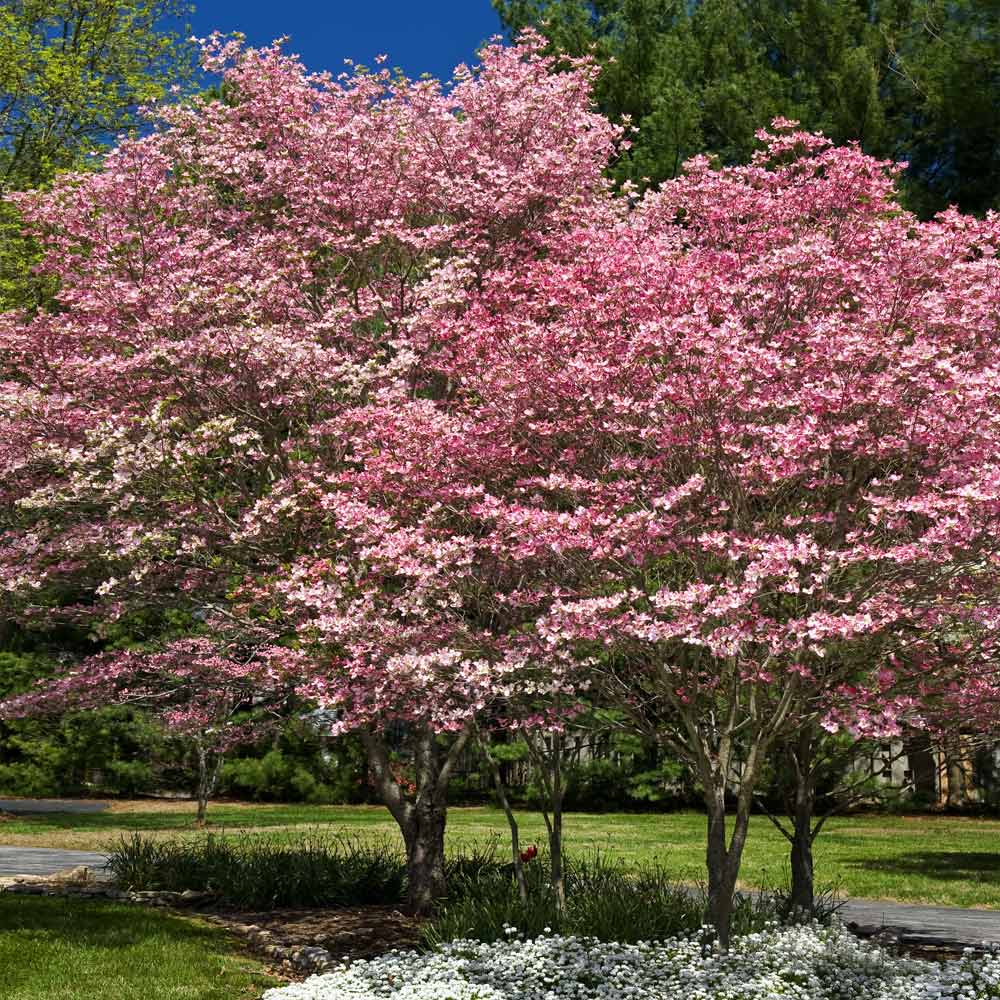The Cherokee Brave Dogwood (Cornus florida ‘Cherokee Brave’) is a stunning ornamental tree known for its vibrant pink flowers and striking foliage. A popular choice for gardeners and landscapers, this cultivar of the flowering dogwood tree adds a splash of color and elegance to any landscape. If you’re considering adding a Cherokee Brave Dogwood to your garden or simply want to know more about where to find this beautiful tree, this article will guide you through its natural habitats, nurseries, garden centers, and other sources.
Native Habitat and Natural Growth
The Cherokee Brave Dogwood is a cultivated variety of the flowering dogwood, which is native to the eastern United States. While the specific ‘Cherokee Brave’ cultivar is not found in the wild, its parent species, Cornus florida, thrives in deciduous forests, woodlands, and along the edges of clearings from Maine to northern Florida and west to Texas and Missouri. These areas provide the well-drained, acidic soil and partial shade that dogwoods prefer.
In their native habitat, flowering dogwoods are understory trees, meaning they grow beneath the canopy of larger trees. This environment offers them protection from harsh sun and provides the dappled light conditions they thrive in. If you’re looking to observe the natural beauty of dogwoods in the wild, national and state parks within this range are excellent places to visit, especially during spring when the trees are in bloom.
Nurseries and Garden Centers
For those looking to purchase a Cherokee Brave Dogwood, nurseries and garden centers are the most reliable sources. Many specialized nurseries focus on native and ornamental trees, offering a range of dogwood cultivars, including Cherokee Brave. When searching for a reputable nursery, consider the following:
- Local Nurseries: Check with local nurseries in your area, especially those that specialize in native plants or ornamental trees. Local nurseries often have a selection tailored to the regional climate and soil conditions, ensuring that the plants they sell are well-suited to thrive in your area.
- Specialty Nurseries: Some nurseries specialize in specific plant families or types, such as flowering trees. These specialty nurseries may have a wider selection of dogwood cultivars, including harder-to-find varieties like Cherokee Brave. It’s worth exploring these options if you’re looking for a specific tree.
- Online Nurseries: Many reputable online nurseries offer a wide range of plants, including Cherokee Brave Dogwoods. Purchasing online can be convenient, especially if local options are limited. However, it’s important to choose a reliable vendor with good reviews and a solid reputation for quality plants.
Botanical Gardens and Arboretums
Botanical gardens and arboretums are excellent places to see mature specimens of the Cherokee Brave Dogwood and other ornamental trees. These institutions often have curated collections of plants, showcasing a variety of species and cultivars in well-maintained settings. Visiting a botanical garden or arboretum can provide inspiration for your own garden and allow you to see how different plants grow and interact in a landscape.
In addition to viewing plants, botanical gardens and arboretums often have plant sales or seasonal events where you can purchase plants, including dogwoods. These events are great opportunities to buy high-quality plants directly from knowledgeable horticulturists.
Plant Sales and Gardening Events
Local plant sales, gardening fairs, and farmers’ markets can also be good places to find Cherokee Brave Dogwoods. These events are often hosted by gardening clubs, botanical gardens, or community organizations and can offer a wide variety of plants at reasonable prices. In many cases, the plants available at these events are grown by local gardeners or nurseries, ensuring they are well-adapted to your local climate.
These events also provide a chance to connect with other gardeners and plant enthusiasts, who can offer advice and share their experiences with growing dogwoods and other plants. Networking with fellow gardeners can be a valuable resource as you cultivate your own garden.
Tips for Selecting and Planting Cherokee Brave Dogwood
When purchasing a Cherokee Brave Dogwood, consider the following tips to ensure you select a healthy tree and give it the best start in your garden:
- Choosing a Healthy Tree: Look for a tree with healthy, vibrant leaves and a strong, well-formed structure. Avoid trees with signs of disease, such as discolored leaves, spots, or wilting. The bark should be smooth and free of damage.
- Planting Location: Select a planting location that offers partial shade, mimicking the tree’s natural understory habitat. The soil should be well-drained and slightly acidic. Avoid areas with standing water or heavy clay soils, as these conditions can lead to root rot.
- Planting Time: The best time to plant dogwoods is in the fall or early spring, when the tree is dormant. This allows the roots to establish before the stress of hot summer weather.
- Care and Maintenance: Water the tree regularly during its first year, especially during dry periods. Mulching around the base of the tree can help retain moisture and regulate soil temperature. Prune as needed to maintain shape and remove any dead or diseased branches.
Conclusion
Finding and growing a Cherokee Brave Dogwood can be a rewarding experience, adding beauty and seasonal interest to your garden. Whether you find this charming tree at a local nursery, a botanical garden sale, or a gardening event, taking the time to select a healthy specimen and providing it with the right care will ensure that your Cherokee Brave Dogwood thrives for years to come. By exploring its native habitats, visiting botanical gardens, and connecting with other gardeners, you can deepen your appreciation for this beautiful tree and enjoy its vibrant blooms each spring.

Leave a Reply